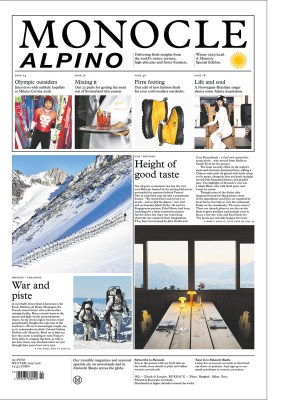Hop aboard Trans Maldivian Airways, the operator turning transit into an elevated experience
The seaplane terminal at Malé in the Maldives is a ballet of improbable logistics. Workers shuffle onto De Havilland Twin Otters bound for far-flung atolls. Honeymooners board aircraft branded with Soneva livery or Four Seasons tail markings. On final approach, these pontoon planes skim across the lagoon, bringing slightly sunburnt vacationers back to connect home on the likes of British Airways, Emirates and Qatar Airways. It’s an organised hum: part ferry dock, part regional airport, part sorting facility for an entire nation’s comings and goings.
This is Trans Maldivian Airways (TMA) – the world’s largest seaplane operator and the switchboard that turns a scattered archipelago into a functioning luxury ecosystem. Every year, its fleet ferries more than a million people across a nation that has no highways and precious few runways. Without TMA, the Maldives simply wouldn’t work.
The Republic of Maldives consists of 1,192 islands spread over 90,000 square kilometres, most of which are too small for traditional airports. Running a seaplane network at this scale is maritime aviation: weather windows move hourly, lagoons deepen and shallow with tides, and resort demand expands and contracts.

Inthikab Ahmed, TMA’s head of ground operations, oversees what amounts to a daily exercise in controlled improvisation. His role includes playing the diplomat, hosting VIPs as they transfer but also acting as a savvy operator of the sea-spray ballet. His captains, clad in white shirts and knee-length shorts, are bush pilots crossed with mariners. Dispatch teams track cloud build-ups on instinct and radar. Maintenance schedules have to account for saltwater corrosion. Fuel logistics involve barges and reef-side depots. Everything must work because nothing can stop – the Maldives hosted a record two million tourists last year.
TMA is owned by a consortium led by the Carlyle Group, a US-based private equity firm, which is not the obvious option for what is effectively a national utility. But the private-equity logic does check out: control the essential infrastructure and you control the value chain. None of the villa glitz matters if guests can’t reach the island with reliability and a sense of occasion.
High-end tourism thrives on removing friction and TMA has made one of the world’s most complicated geographies a navigable one. The genius stems from it turning necessary infrastructure into a higher-end experience. In a moment where expeditionary luxury is ascendant, the seaplane becomes more than transfer, it is part of the package and the appeal. The whir of the Pratt & Whitney engines, pilots’ bare feet on rudder pedals, climbing into a well-worn cabin or disembarking on a dock is what makes a holiday distinctly Maldivian.
Naturally, sustainability advances are coming too, including hybrid propulsion, quieter engines and improved lagoon infrastructure. But the core magic resists change and is, in some ways, defiantly old school. TMA still feels genuinely analogue and, in an age where extra-leg flight logistics are becoming luxury’s final frontier, the Maldives’ most vivid experience might not be the overwater villa but the journey that gets you there.
Colin Nagy is a Los Angeles-based journalist and frequent Monocle contributor. For more opinion, analysis and insight, subscribe to Monocle today.



